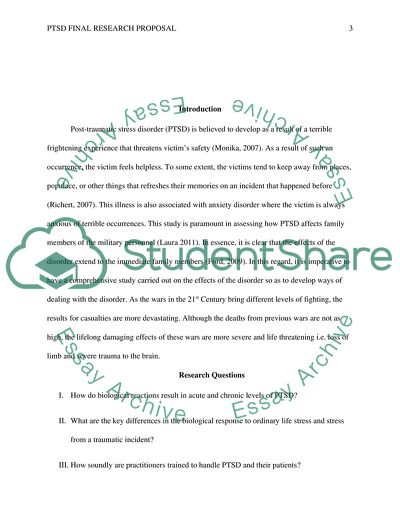Cite this document
(The Problem od Post-Traumatic Stress Disorder Research Proposal Example | Topics and Well Written Essays - 3500 words - 1, n.d.)
The Problem od Post-Traumatic Stress Disorder Research Proposal Example | Topics and Well Written Essays - 3500 words - 1. https://studentshare.org/psychology/1799120-ptsd-final-research-proposal
The Problem od Post-Traumatic Stress Disorder Research Proposal Example | Topics and Well Written Essays - 3500 words - 1. https://studentshare.org/psychology/1799120-ptsd-final-research-proposal
(The Problem Od Post-Traumatic Stress Disorder Research Proposal Example | Topics and Well Written Essays - 3500 Words - 1)
The Problem Od Post-Traumatic Stress Disorder Research Proposal Example | Topics and Well Written Essays - 3500 Words - 1. https://studentshare.org/psychology/1799120-ptsd-final-research-proposal.
The Problem Od Post-Traumatic Stress Disorder Research Proposal Example | Topics and Well Written Essays - 3500 Words - 1. https://studentshare.org/psychology/1799120-ptsd-final-research-proposal.
“The Problem Od Post-Traumatic Stress Disorder Research Proposal Example | Topics and Well Written Essays - 3500 Words - 1”. https://studentshare.org/psychology/1799120-ptsd-final-research-proposal.


